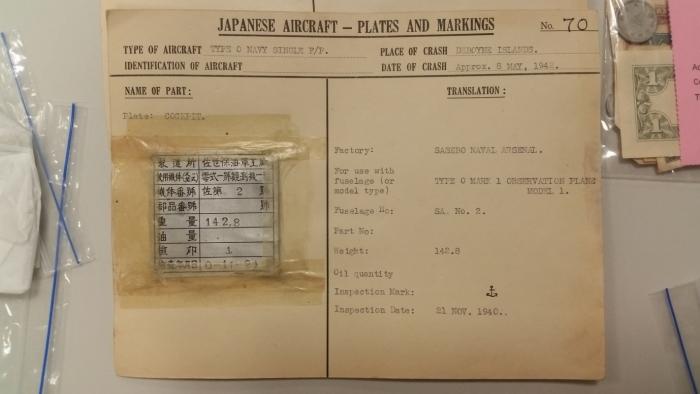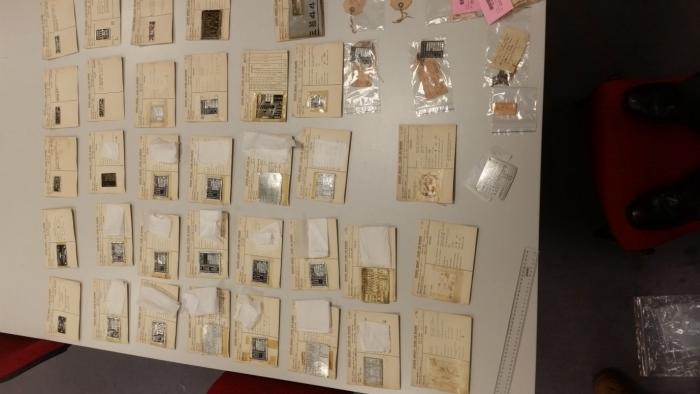Capturing Japanese aviation history
From the earliest days of aviation, aircraft manufacturers have fitted data plates to aircraft components, providing maintenance crews with replacement part numbers and information on equipment capability, appropriate lubrication, and date of manufacture. The plates often include company logos, serial numbers, and factory names and locations.

A data plate from a Japanese Zero fighter aircraft shot down on Hammond Island in the Torres Strait. While the rudder of the aircraft was covered with fabric, the data plate was visible to maintenance crews through a small window covered with a clear plastic-like material.
The wreckage of enemy aircraft shot down over Australian territory during the Second World War was collected and examined by Allied intelligence services looking to gain insights into equipment capabilities. Information about the factories where equipment was manufactured would be used later in the war to produce targets for bombing raids.

A data plate from the cockpit of a Zero shot down over the Deboyne Islands.
The Australian War Memorial recently acquired a collection of Japanese data plates, most of which had been translated and mounted on cardboard intelligence sheets.

A selection of the data plates in the Memorial's collection.
A large number, however, had become separated from their backing. In researching and cataloguing the plates, curator Garth O’Connell’s first task was to match the plates with their cards.

Australian War Memorial Curator, Garth O’Connell, matching plates with their intelligence cards.
The data plates represent some notable aircraft, including the first Zero fighter shot down on Australian soil (the pilot of which became the first Japanese prisoner of war taken by Australian forces), and a Betty bomber shot down by Squadron Leader Cresswell over Darwin on 23 November 1942.